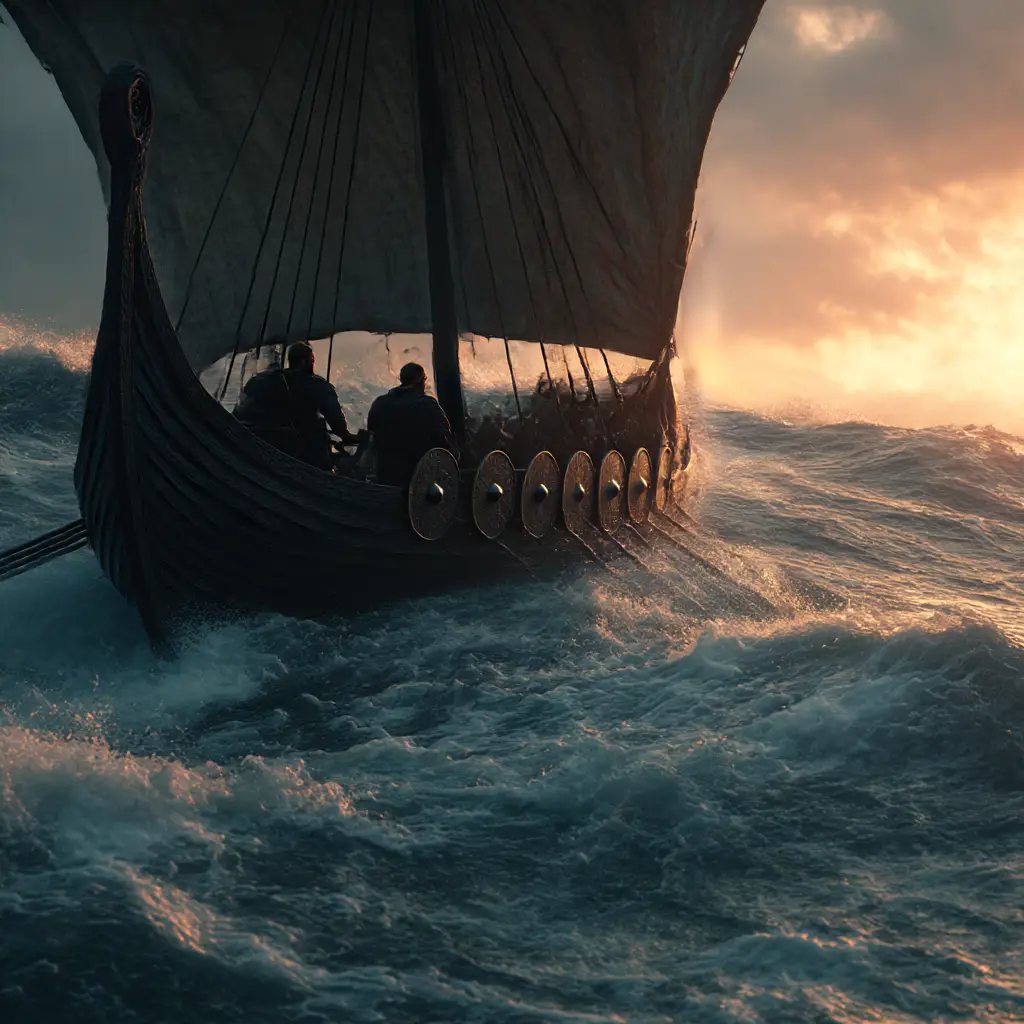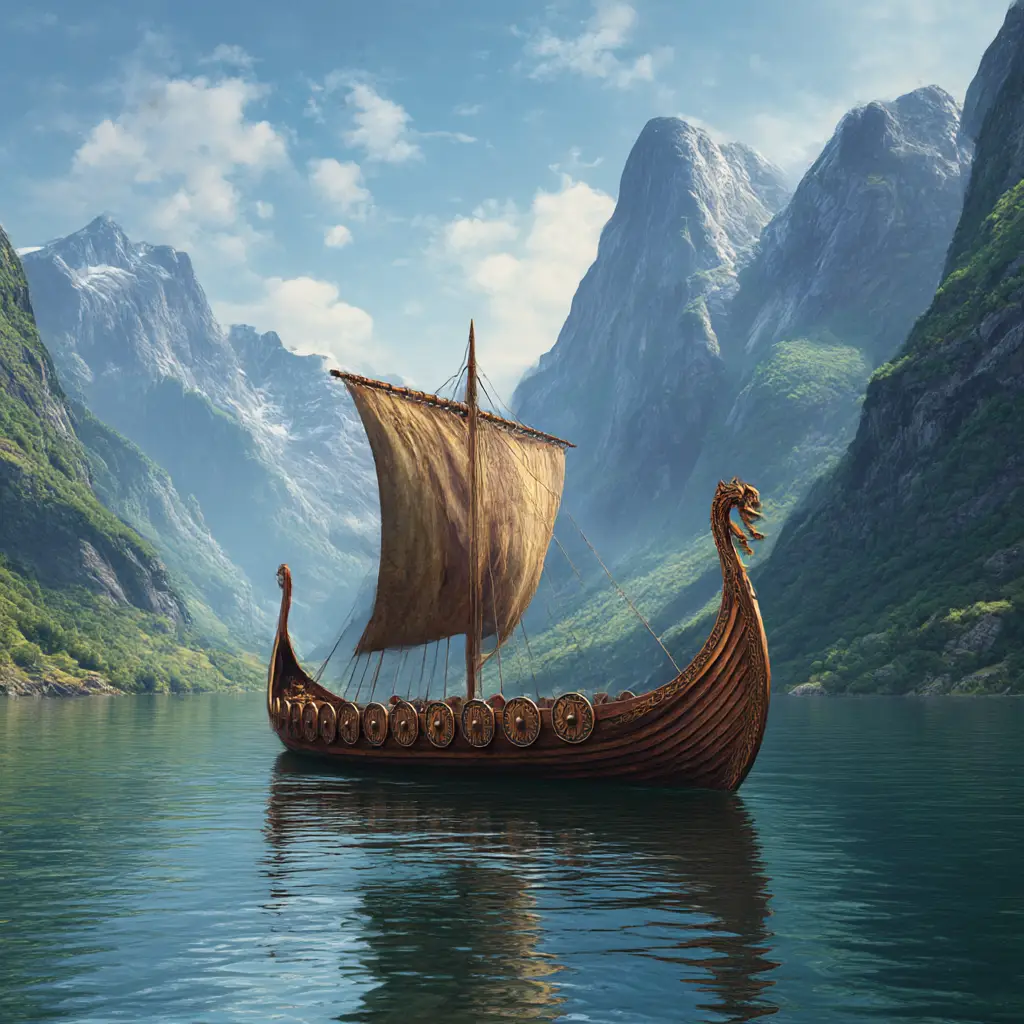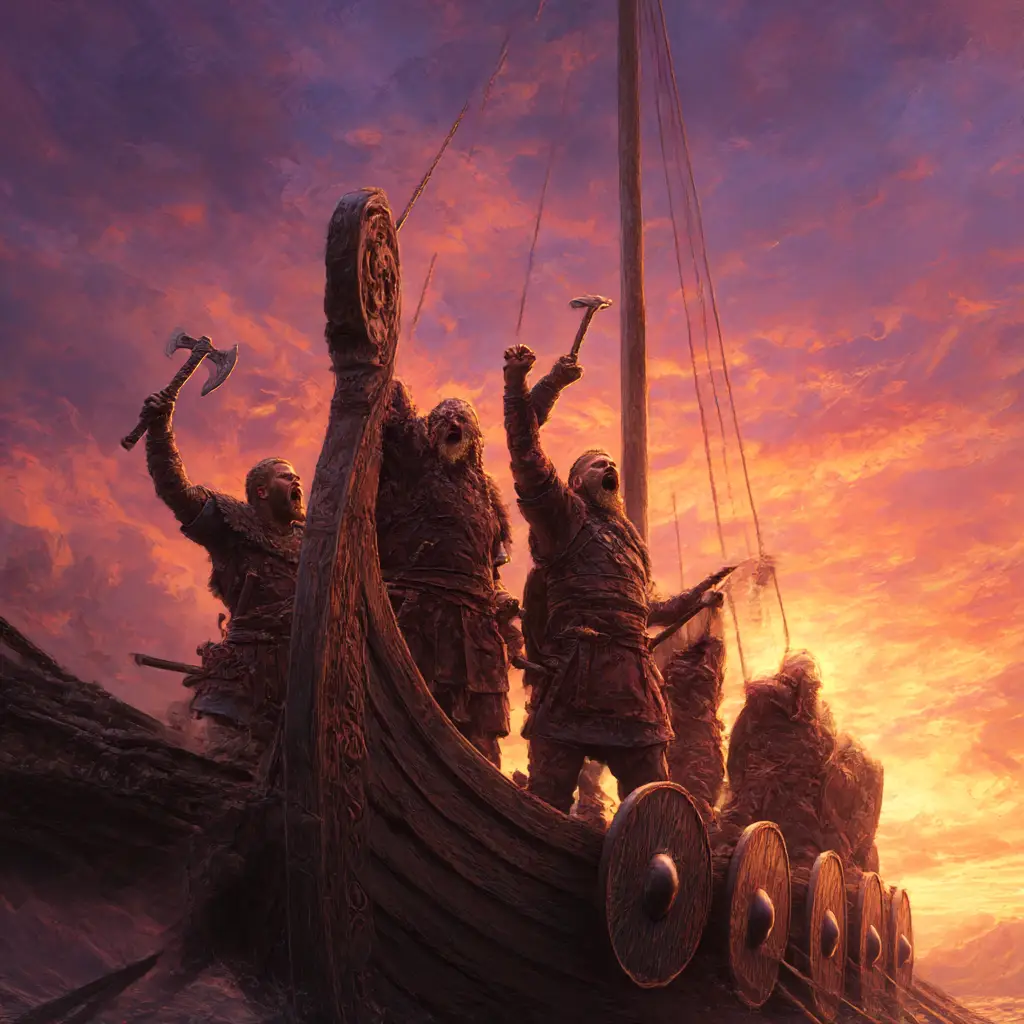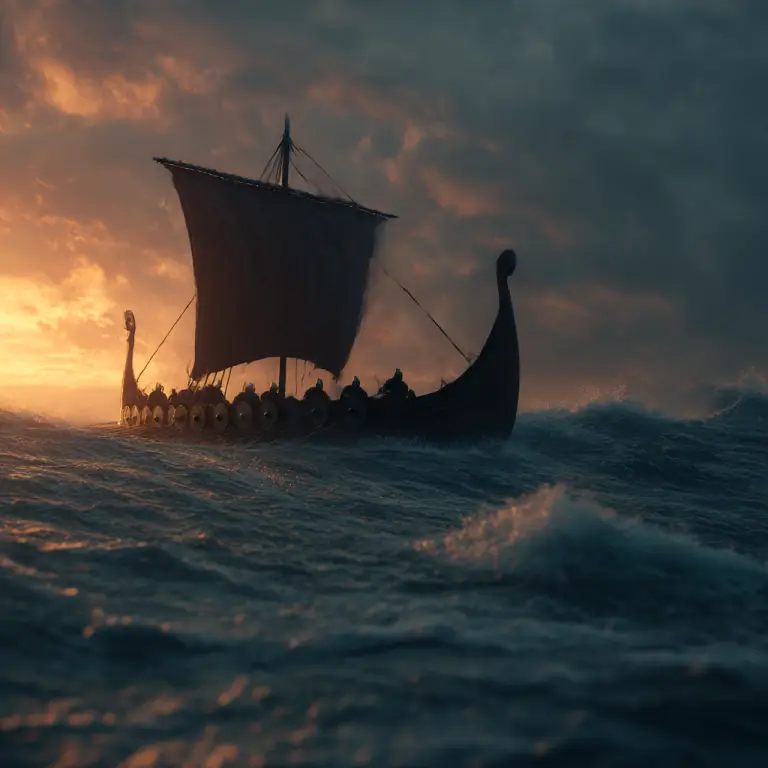Life aboard a Viking longship was a test of endurance, skill, and teamwork. These sleek, powerful vessels were the heart of Norse exploration, trade, and warfare, designed to navigate both open seas and shallow rivers with remarkable speed and agility. Every voyage brought its own challenges, and the crew’s survival depended on discipline, seamanship, and mutual trust.
A typical longship crew ranged from thirty to sixty men, each with a defined role. The helmsman steered with a side-mounted steering oar, guided by the stars, sun, and coastline landmarks. The ship’s leader or captain, often a chieftain or seasoned warrior, commanded with authority, setting the course and maintaining order among the crew. Below him, experienced sailors managed sails, oars, and rigging, while warriors prepared for raids or defence.
Life on board was physically demanding. Space was limited, and there was no shelter from wind or rain except for tarred woollen cloaks. The men slept on their sea chests, using them to store weapons, tools, and personal belongings. During calmer waters, a canvas awning might be raised for shade or rain protection, but comfort was minimal. The ship was both transport and home for weeks or months at a time.
Meals were simple and practical. Dried fish, smoked meat, hard bread, and cheese formed the main diet, supplemented by ale or water stored in wooden casks. When conditions allowed, the crew went ashore to cook stews, mend sails, and rest before continuing their journey. Fires were never lit aboard due to the risk of setting the ship alight, so all cooking took place on land.
Every crew member was trained to row and fight. The long oars required strength and rhythm, and all men worked in unison to keep pace, often to the beat of a drum or the chant of a steersman. When the wind was favourable, a square wool sail carried the ship forward, freeing the men from the oars. The carved dragon or serpent on the prow symbolised strength and protection, believed to ward off evil spirits and strike fear into enemies.
Camaraderie was vital. Life at sea demanded trust and cooperation. Songs, storytelling, and shared rituals helped maintain morale during long journeys. Bonds formed through hardship, battle, and exploration shaped the spirit of the Viking crew. Many of these men were not only raiders but also traders, explorers, and settlers, carrying goods, culture, and ideas across distant lands.
When land appeared on the horizon, the mood shifted from endurance to anticipation. Whether approaching a foreign shore for trade, settlement, or conquest, every voyage carried risk and opportunity. The longship was more than a vessel; it was a symbol of freedom, courage, and discovery.
The legacy of Viking longship life endures as a testament to human resilience and the Norse passion for the sea. Their mastery of shipbuilding and navigation opened routes from Scandinavia to the British Isles, the Mediterranean, and beyond, shaping the course of European history.
Vikings Going to the Toilet on a Longship
These vessels were designed for speed, manoeuvrability, and efficiency, not comfort. With up to sixty men on board, space was limited, and privacy was almost non-existent. Even basic needs such as going to the toilet had to be managed in a simple, no-nonsense way.
There were no dedicated toilet facilities on Viking longships. When nature called, the crew would relieve themselves over the side of the ship into the sea. This was typically done by crouching or sitting on the gunwale (the upper edge of the hull) at the far end of the ship, where the wind would carry away any odours. It was not without risk, especially in rough seas, and sailors had to be careful not to lose their balance. For longer voyages, this became a routine part of life, accepted without embarrassment as a simple necessity.
At night or during poor weather, when it was unsafe to lean over the side, a bucket might be used instead. The bucket would be emptied overboard when it was safe to do so, and seawater would be used to rinse it clean. Fresh water was precious and carefully rationed, so cleaning and washing relied heavily on seawater. Hygiene standards were basic by modern comparison, but the Vikings were known to wash regularly when they could, especially on land, to avoid discomfort and disease.
For female passengers, who were sometimes present on trading or migration voyages, the situation would have been handled more discreetly, likely with the use of buckets or small containers and with the crew turning away to allow privacy.
While it may sound unpleasant today, Viking sailors were practical people accustomed to hardship and to making the best use of their surroundings. Life on a longship demanded adaptability, endurance, and a willingness to face the elements. Going to the toilet at sea was simply another part of surviving and working together in close quarters on one of history’s most remarkable seafaring vessels.



